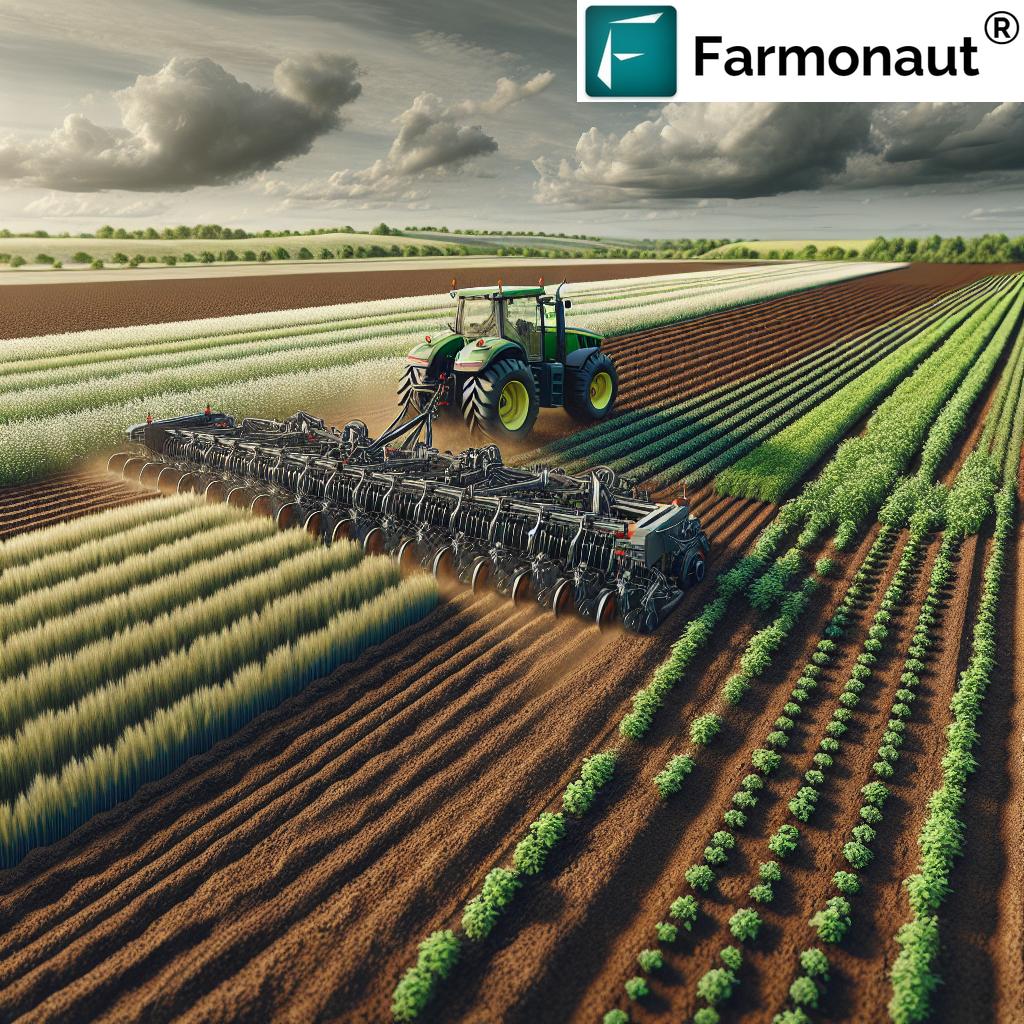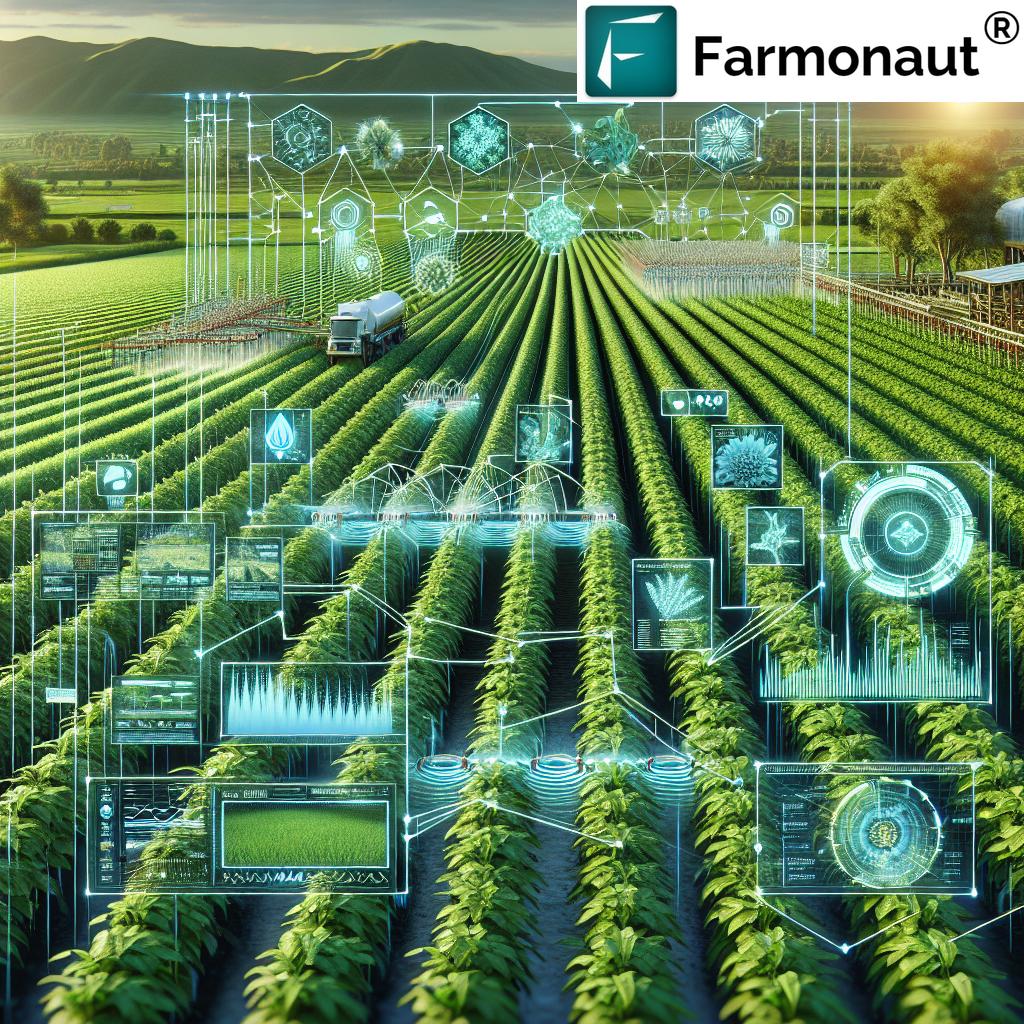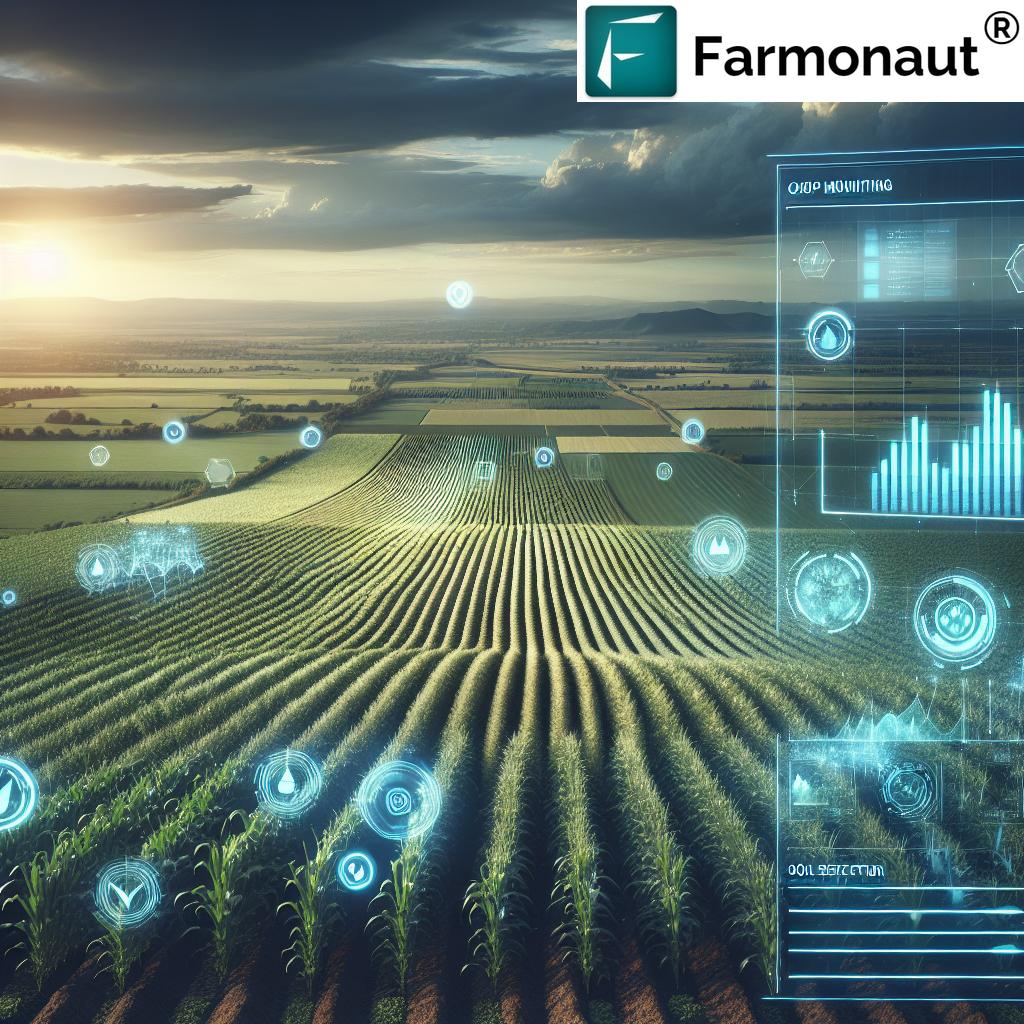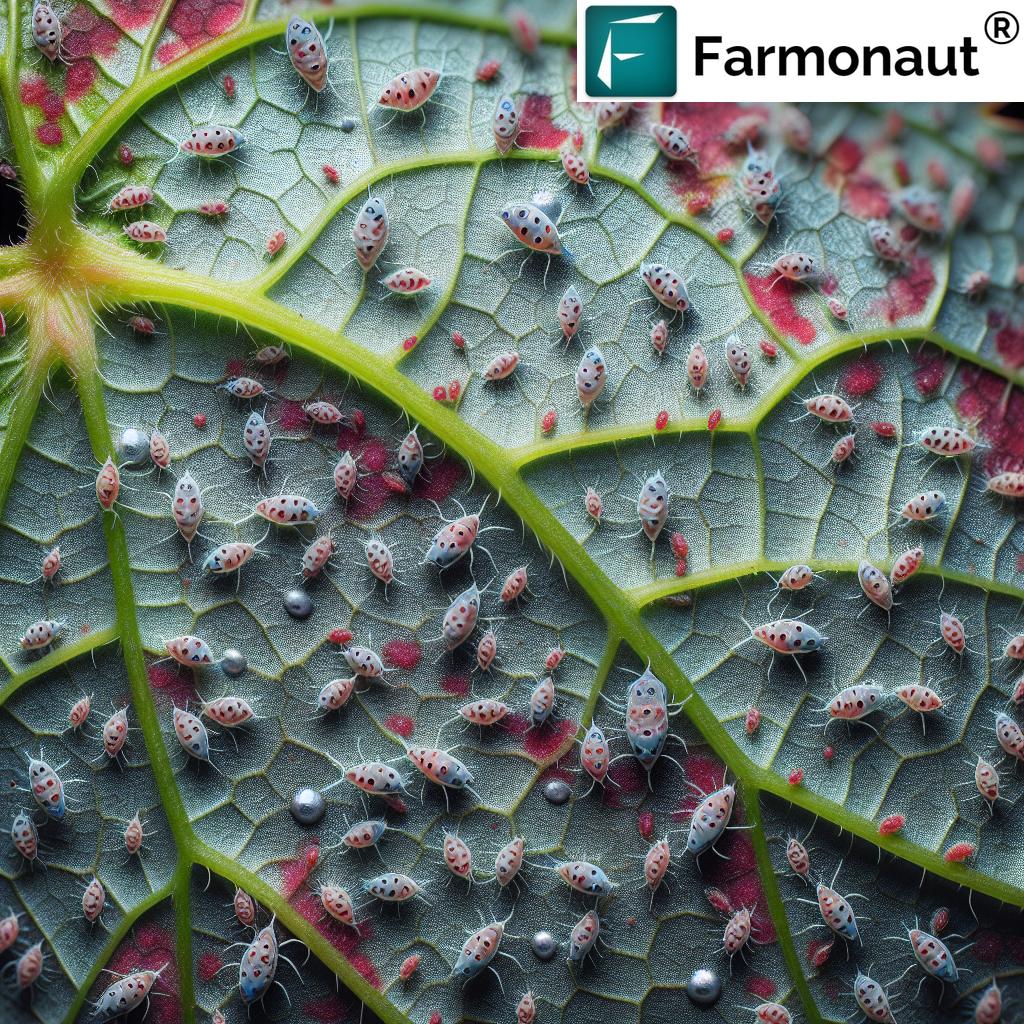Table of Contents
Crop Management: 7 Innovative Methods to Boost Yields Faster
Crop management is a cornerstone of modern agriculture, underpinning our ability to enhance food security, maximize economic returns, and encourage sustainability. As the global population swells and resources tighten, the need to optimize crop production and yield through advanced management practices becomes imperative.
In this blog, we’ll delve into the most innovative methods—from soil preparation and water efficiency to integrated pest management (IPM) and cutting-edge precision agriculture technology. We’ll also show you how Farmonaut is transforming digital farming with satellite-based solutions, AI insights, and powerful resource management tools to help farmers thrive in an ever-evolving agricultural landscape.
7 Innovative Methods for Effective Crop Management
1. Soil Preparation Methods & Conservation Tillage
An essential first step in ensuring high crop yields is proper soil preparation. By handling soil care and management expertly, we lay the groundwork for all other farming activities. The mechanical manipulation of soil—known as tillage—creates a hospitable seedbed, incorporates crop residues, and helps control weeds. Yet, excessive tillage jeopardizes soil health, leading to erosion, lowering organic matter, and disrupting soil structure.
-
Conservation Tillage:
This method minimizes soil disturbance by leaving crop residues on the surface, which protects against erosion and improves soil health over time. -
No-Till Farming:
With no-till farming, we eliminate all tillage operations, plant directly into previous residue, and maximize soil conservation. This leads to improved water infiltration, higher carbon sequestration, and better overall soil structure.
By integrating soil preparation methods and modern conservation tillage, we can mitigate issues such as soil compaction and loss of soil fertility, setting the stage for productive crop growth.
2. Strategic Planting: Cover Cropping & Intercropping
Planting strategies greatly influence crop performance. By leveraging diverse cover cropping strategies and intercropping practices, we can:
- Boost soil health
- Increase microbial activity and nitrogen availability
- Suppress weeds
- Reduce erosion risk during vulnerable periods
Cover Cropping Strategies
Cover crops (like rye or clover) grown during off-season periods protect and enrich the soil surface, improve fertility, and ensure continual organic matter input. These crops play an integral role in efficient nutrient cycling and erosion control.
Intercropping Practices
Intercropping means growing two or more crops together, maximizing biodiversity, resource use efficiency, and reducing competition for vital resources like minerals and water. For instance, combining deep-rooted and shallow-rooted crops leads to more effective exploitation of soil layers.
We recommend regular assessment of planting methods to match crop types, soil conditions, and farm objectives.
3. Integrated Pest Management (IPM) and Crop Disease Control
Protecting crops from pests and diseases is paramount for maintaining yields and ensuring food security. Traditional reliance on chemical pesticides has raised environmental and health concerns, making integrated pest management (IPM) the gold standard.
-
Integrated Pest Management:
IPM blends biological, cultural, physical, and chemical control tools to efficiently manage pest populations with minimum risk to environmental and economic outcomes. We emphasize scouting and field monitoring to time interventions strategically. -
Crop Scouting:
Routine field inspections, aided by GPS-enabled devices and data analytics, allow for accurate pest identification and swift actions to prevent economic losses.
The result is greater sustainability, reduced pesticide reliance, and healthier crops that stand up to market and environmental demands.
“Integrated pest management reduces pesticide use by 50%, promoting healthier crops and sustainable farming practices.”
4. Efficient Water Management in Agriculture
With water scarcity escalating globally, efficient water management in agriculture is vital for both productivity and environmental protection. We advocate:
-
Irrigation Scheduling:
Applying water exactly when and where it’s needed—using real-time soil moisture data—optimizes resource use and prevents waste. -
Rainwater Harvesting:
Collecting and storing rainwater during rainy periods supports crops through drought, enhances sustainability, and reduces external dependence. -
Drip Irrigation Systems:
Using drip irrigation systems, farmers can deliver water and nutrients directly to plant roots, minimizing evaporation, run-off, and water loss. It’s a cornerstone of precision agriculture technology.
These water management methods are essential for optimizing yields, minimizing input costs, and ensuring sustainable crop production.
5. Precision Agriculture Technology
The integration of technologies—from satellite imagery to sensors, machine learning, and AI—has transformed precision agriculture. Tools such as those provided by Farmonaut empower farmers to:
- Monitor field variability in real time
- Optimize fertilizer and pesticide use through targeted applications
- Improve resource management and reduce environmental impact
- Increase yields while lowering costs
By adopting precision agriculture technology, we bring data-driven decision making into every stage of crop management, promoting both productivity and sustainability.
6. Digital Twins in Farming
Digital twins represent a new frontier in farming practices. Through virtual simulation of crops, fields, and input scenarios, we can:
- Experiment with crop rotation, fertilizer and pest control strategies virtually
- Predict outcomes before real-life application, saving resources and time
- Optimize field management for maximum yield and sustainable development
With digital twins in farming, our decision-making is more precise, tailored, and cost-effective.
7. Advanced Resource Management Tools
Efficient and sustainable resource management is essential for optimizing crop yields and economic returns. Tools offered by Farmonaut, including satellite-based health monitoring, AI-based advisory, and blockchain-enabled traceability, provide:
- Real-time insights into crop health and soil moisture
- Customized decision support via Farmonaut Jeevn AI Advisory System
- Traceability from farm to consumer using secure blockchain solutions
- Fleet and machinery management for optimizing operations—explore Farmonaut Fleet Management
- Carbon footprint tracking encouraging sustainability—see Farmonaut Carbon Footprinting
Deploying advanced management tools assures robust yields, reduced losses, and ongoing compliance with environmental standards.
Comparative Methods Table: Crop Management Innovations
| Method | Description | Technology Involved | Estimated Yield Improvement (%) | Implementation Speed |
|---|---|---|---|---|
| Conservation Tillage | Minimizes soil disturbance, retains crop residues, reduces erosion. | Manual/mechanical implements, satellite field monitoring | 8–13% | Moderate |
| Cover Cropping | Off-season crops (e.g. rye, clover) to protect and improve soil health. | Seed drills, crop rotation planning tools | 7–12% | Moderate |
| Intercropping | Simultaneously growing multiple crops to optimize resource use, increase biodiversity. | Mapping tools, multispectral data (Farmonaut) | 8–15% | Moderate |
| Integrated Pest Management (IPM) | Combines scouting, biological and chemical tools, reduces chemical use. | Field sensors, AI advisories, mobile apps | 10–18% | Fast |
| Efficient Water Management | Includes irrigation scheduling, drip systems, rainwater harvesting. | Soil sensors, smart irrigation controllers, satellite moisture tracking | 12–17% | Moderate |
| Precision Agriculture | Data-driven input optimization using GPS, sensors, AI, and satellite imagery. | Farmonaut’s satellite platform, drones, digital mapping, soil sensors | Up to 20% | Fast |
| Digital Twins in Farming | Simulation of farming scenarios for resource and crop optimization. | Digital modeling, AI, Farmonaut data APIs | 10–15% | Variable |
Advanced Technologies in Crop Management
Farmonaut’s Role in Precision Agriculture Technology
Farmonaut offers comprehensive precision agriculture technology solutions, democratizing access for farmers globally. Here’s how Farmonaut stands out:
-
Satellite-based crop health monitoring.
Utilizing multispectral imagery for NDVI analysis and soil moisture indexes, enabling precise management of irrigation, fertilization, and pest or disease intervention. -
AI-Based Farm Advisory (Jeevn AI).
Providing personalized crop management strategies, weather forecasts, and targeted advice based on field condition analytics. Get real-time guidance for growth development and farming operations. -
Blockchain-Enabled Traceability.
Delivering industry-leading supply chain transparency for food and textile sectors, increasing trust and compliance. -
Fleet and Resource Management.
Powerful fleet management tools to minimize costs, optimize vehicle usage and ensure timely agricultural operations. -
Carbon Footprinting for Sustainability.
Real-time carbon tracking to stimulate improvement in environmental performance. -
Large-scale Plantation & Forest Advisory.
For large farms and plantations, Farmonaut’s large-scale farm management solution offers end-to-end monitoring and advisory.
Expanding access, Farmonaut provides a full-featured web and mobile app suite, and robust API and developer documentation for integration with third-party systems. This flexibility amplifies the utility and reach of precision agriculture worldwide.
Farmonaut API and Integration
For developers, agribusinesses, and agri-insurance institutions, Farmonaut’s API offers seamless data integration—satellite imagery, crop health, moisture, and weather—directly into your platforms and decision support systems. Explore in-depth integration with Developer Docs.
Why Choose Farmonaut for Advanced Crop Management?
Farmonaut empowers farmers, agri-businesses, governments, and corporate clients to unlock higher yields, streamline resources, and protect the planet. Here’s what you can expect:
- Affordable Precision Agriculture: No costly hardware. Satellite-powered, data-driven analytics accessible to all farm sizes.
- Productivity Boost: Timely decisions on fertilization, irrigation, and disease management resulting in higher production, optimized costs, and minimized losses.
- Environmental Sustainability: Carbon tracking, reduced chemical use (IPM), and water savings for a greener future.
- Supply Chain Transparency: Blockchain-based traceability solutions that build consumer trust.
- Scalable, Customizable Platform: Modular tools for farmers up to government agencies.
Get Started with Farmonaut: Subscription Options
Ready to boost your yields and future-proof your farm? Get access to all the advanced crop management solutions described above through Farmonaut’s flexible subscriptions.
Choose the package that’s right for you:
Crop Management FAQ: Your Top Questions Answered
What is crop management and why is it important?
Crop management is the science and practice of optimizing crop growth, development, and yield through a suite of agricultural practices such as soil preparation, planting strategies, pest and disease control, water management, and the adoption of advanced technologies. It safeguards food security, increases economic returns, and supports environmental sustainability.
How can conservation tillage benefit my farm?
Conservation tillage minimizes soil disturbance, enhances organic matter retention, reduces erosion, and can improve yield by providing a favorable soil environment. It also conserves water resources and reduces fuel and labor costs.
What are the key components of integrated pest management?
Integrated pest management (IPM) combines field scouting, biological controls, physical barriers, and judicious chemical interventions. The goal is to reduce pesticide use while effectively managing pests to protect crops and the environment.
How does precision agriculture technology boost crop yields?
Precision agriculture uses data from satellites, sensors, and analytics tools to monitor crop and field variability. This enables site-specific management of fertilizer, water, and plant protection products, which increases efficiency and crop yields while reducing costs and resource waste.
What is the role of digital twins in farming?
Digital twins allow farmers to simulate farming practices virtually, anticipate outcomes, and optimize resource allocation. This results in informed decision-making, increased yields, and reduced risk before actual implementation on the farm.
How do I access Farmonaut services?
Farmonaut offers easy access through web/browser app, Android, and iOS apps. Flexible subscriptions and API integration are available for individual farmers, cooperatives, and large-scale agribusinesses.
Can Farmonaut help me with insurance or financing?
Yes, with Farmonaut’s crop loan and insurance verification solutions, financial institutions can verify farm conditions and yield history using robust satellite data, streamlining loan approvals and reducing fraud.
Summary: Crop Management for a Productive & Sustainable Future
By embracing innovative crop management methods—including soil preparation and conservation tillage, cover cropping strategies, integrated pest management, efficient water management in agriculture, precision agriculture technology, drip irrigation systems, and digital twins in farming—we can drive faster yield gains, strengthen farm profitability, and champion environmental stewardship.
Farmonaut provides scalable, accessible agricultural technology that’s tailored for farms of every size—offering robust tools for crop monitoring, resource management, traceability, fleet optimization, and sustainability. As we move forward, it’s vital to align our practices with advanced, data-driven methods to ensure the prosperity of both our fields and our planet.
Reach your highest yield potential. Experience Farmonaut today for future-ready crop management!












